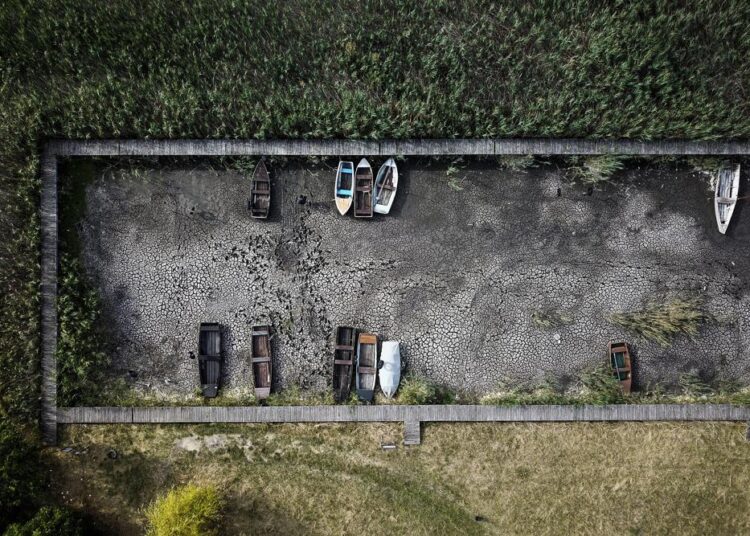LUX, France — Once, a river ran through it. Now, white dust and thousands of dead fish cover the wide trench that winds amid rows of trees in France’s Burgundy region in what was the Tille River in the village of Lux.
From dry and cracked reservoirs in Spain to falling water levels on major arteries like the Danube, the Rhine and the Po, an unprecedented drought is afflicting nearly half of the European continent. It is damaging farm economies, forcing water restrictions, causing wildfires and threatening aquatic species.
There has been no significant rainfall for almost two months in Western, Central and Southern Europe. And the dry period is expected to continue in what experts say could be the worst drought in 500 years.
Climate change is exacerbating conditions as hotter temperatures speed up evaporation, thirsty plants take in more moisture and reduced snowfall in the winter limits supplies of fresh water available for irrigation in the summer. Europe isn’t alone in the crisis, with drought conditions also reported in East Africa, the western United States and northern Mexico.
As he walked in the 15-meter-wide (50-foot-wide) riverbed in Lux, Jean-Philippe Couasné, chief technician at the local Federation for Fishing and Protection of the Aquatic Environment, listed the species of fish that had died in the Tille.
“It’s heartbreaking,” he said. “On average, about 8,000 liters (about 2,100 gallons) per second are flowing. … And now, zero liters.”
In some areas upstream, some of the trout and other freshwater species are able take shelter in pools via fish ladders. But such systems aren’t available everywhere.
Without rain, the river “will continue to empty. And yes, all fish will die. … They are trapped upstream and downstream, there’s no water coming in, so the oxygen level will keep decreasing as the (water) volume will go down,” Couasné said. “These are species that will gradually disappear.”
Jean-Pierre Sonvico, the regional head of the federation, said diverting the fish to other rivers won’t help because those waterways also are affected, which will lead to overcrowding and more deaths.
“Yes, it’s dramatic because what can we do? Nothing,” he said. “We’re waiting, hoping for storms with rain, but storms are very local so we can’t count on it.”






Discussion about this post